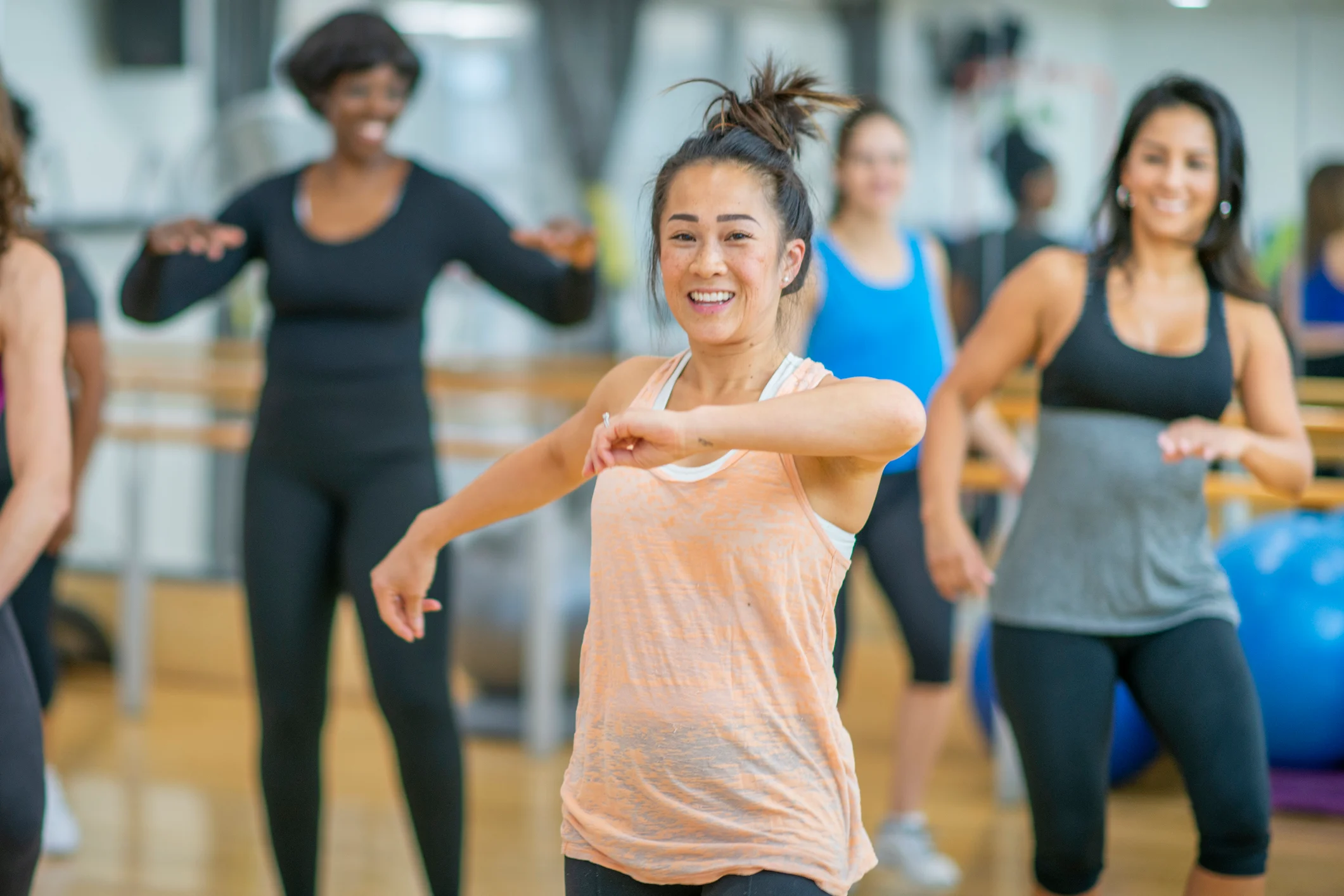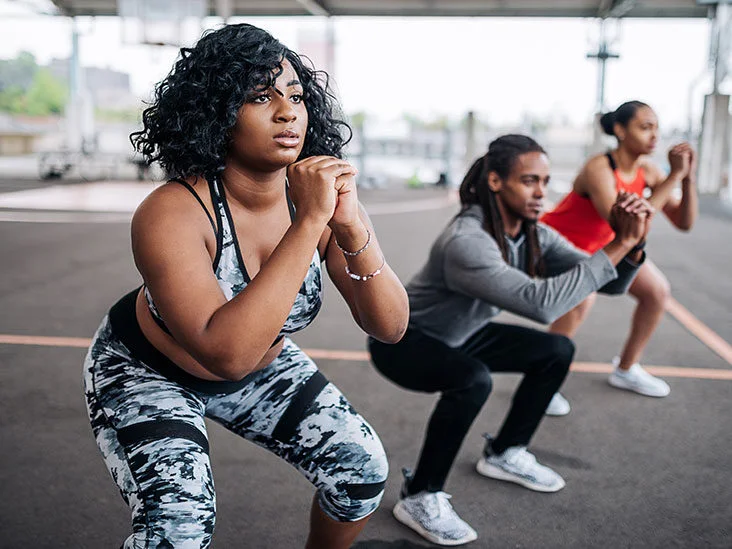Exercise Daily – Are you tired of struggling to maintain a consistent fitness routine or seeing minimal results despite your efforts? You’re not alone. Achieving fitness goals can be daunting, but it doesn’t have to be. This article will explore 10 Fitness Hacks That Will Change Your Life. These hacks are not about quick fixes or drastic measures. Instead, they focus on sustainable, small changes that profoundly impact your fitness journey.
1. The Power of Small Changes
Many people believe that significant transformations require major sacrifices. However, it’s the small, consistent changes that often yield the most significant results. Think of it as compound interest for your health. Small adjustments to your daily routine, eating habits, and mindset can add up over time, leading to lasting improvements.
The Science Behind Small Changes
1. The Compound Effect: Just as a tiny pebble can create ripples that spread across a pond, small changes in your habits can create a ripple effect in your life. This phenomenon, often called the “compound effect,” means that small, positive changes accumulate over time, leading to significant results. For example, opting for a salad instead of fast food for lunch every day may not seem like much, but over months and years, it can result in substantial weight loss and improved health.
2. Sustainable Habits: Big changes often have a high risk of burnout or failure. When you drastically alter your diet or exercise routine overnight, it can be overwhelming, leading to frustration and abandonment of your goals. Small changes, on the other hand, are more manageable and sustainable. They allow you to gradually adapt to new habits, making them more likely to stick.
3. Reducing Resistance: The human brain is wired to resist drastic changes. When you attempt a radical shift in your lifestyle, your brain perceives it as a threat to your comfort zone, triggering resistance. Small changes, however, fly under your brain’s radar. They’re less likely to trigger resistance, making building and maintaining new habits easier.
The Psychology of Small Changes
1. Positive Reinforcement: Small changes often provide quick, tangible rewards, reinforcing your commitment to your fitness goals. For example, if you decide to walk for 15 minutes every evening, you’ll quickly notice improvements in your mood and energy levels. These immediate benefits serve as positive reinforcement, making you more inclined to continue the habit.
2. Building Confidence: Success breeds confidence. As you consistently make small improvements, you begin to believe in your ability to effect change in your life. This growing confidence can spill over into other areas of your fitness journey, encouraging you to take on more significant challenges.
3. Eliminating Overwhelm: Fitness can be complex, with numerous diet plans, workout routines, and strategies to consider. Small changes simplify the process. Instead of overhauling your entire lifestyle, you can focus on mastering one change at a time. This approach reduces overwhelm and allows you to concentrate on the present moment.

2. Hacking Your Daily Routine
Your daily routine can be your greatest asset or your biggest obstacle when it comes to fitness. Learn how to optimize your day for physical activity, including tips on time management, setting priorities, and integrating exercise seamlessly into your schedule.
Time Management
1. Block Scheduling: Implement time-blocking in your daily schedule. Allocate specific time slots for workouts, meals, and even relaxation. Treat these blocks as non-negotiable appointments with yourself.
2. Efficiency Over Duration: You don’t need hours at the gym to stay fit. High-intensity interval training (HIIT) and circuit workouts can deliver excellent results in a short time. Opt for workouts that maximize efficiency.
3. Batch Cooking: Save time and eat healthily by batch-cooking your weekly meals. Prepare nutritious meals in advance so you’re less tempted to grab unhealthy options when you’re pressed for time.
Integration and Automation
1. Use Technology: Leverage fitness apps and wearables to track your progress and stay motivated. Set reminders for workouts and monitor your daily activity levels.
2. Multitasking: Combine fitness with other activities. Listen to educational podcasts during your workouts or take work calls while walking. Finding opportunities to multitask can make fitness more manageable.
3. Automate Decisions: Plan your workouts and meals by reducing decision fatigue. Lay out your workout clothes the night before, and have healthy snacks readily available to avoid impulse eating.
3. Eating Smart for Fitness
Nutrition plays a pivotal role in any fitness journey. Discover how to make smarter food choices, create balanced meal plans, and understand the importance of portion control. We’ll also delve into the power of mindful eating and its impact on your overall health.
Understanding Nutritional Basics
1. Balanced Macronutrients: Your diet should balance macronutrients: carbohydrates, proteins, and fats. Carbs provide energy, proteins support muscle growth and repair, and fats are essential for various bodily functions.
2. Portion Control: Be mindful of portion sizes. Even healthy foods can contribute to weight gain if consumed in excessive amounts. Use portion control methods like measuring cups and your hand’s size to gauge appropriate servings.
3. Quality Matters: Focus on whole, unprocessed foods rich in nutrients. These include fruits, vegetables, lean proteins, whole grains, and healthy fats. Minimize processed and sugary foods.
The Power of Meal Planning
1. Meal Prep: Dedicate weekly time to plan and prepare meals. This reduces the temptation to make unhealthy choices when you’re hungry and short on time.
2. Create a Balanced Plate: Aim to fill half your plate with vegetables, one-quarter with lean protein, and one-quarter with carbohydrates. This provides a balanced mix of nutrients.
3. Snack Wisely: Choose nutritious snacks like Greek yogurt, nuts, or fruits to stabilize your energy levels between meals.

4. Exercise Efficiency
Are you spending hours at the gym without seeing the results you desire? It’s time to work smarter, not harder. Explore efficient workout routines, techniques to maximize your efforts, and the benefits of functional training for a well-rounded approach to fitness.
The Importance of Efficiency
1. Time-saving: Efficient workouts allow you to achieve the same or better results in less time. This is especially valuable for individuals with busy schedules.
2. Prevents Burnout: Overtraining can lead to burnout, injuries, and a lack of motivation. Efficient workouts help you strike the right balance between progress and recovery.
3. Sustainable: Short, intense workouts are often more sustainable in the long term. They are less likely to disrupt your daily routine or lead to exercise fatigue.
High-Intensity Interval Training (HIIT)
1. Definition: HIIT involves short bursts of intense exercise and brief recovery periods. It’s highly efficient because it combines cardiovascular and strength training in one workout.
2. Benefits: HIIT can improve cardiovascular fitness, burn calories, and promote muscle growth. A typical HIIT session can last just 20-30 minutes.
3. Example: Try a 30-second sprint followed by a 30-second walk or jog. Repeat for 15-20 minutes.
Compound Exercises
1. Definition: Compound exercises work multiple muscle groups simultaneously. Examples include squats, deadlifts, and push-ups.
2. Benefits: These exercises are time-efficient because they target several muscles simultaneously. They also promote functional strength.
3. Example: Combine squats, lunges, and push-ups into a circuit workout for a full-body blast.

5. Mental Fitness Matters
Your mental state is a key driver of physical success. Learn about the connection between mental health and physical well-being and strategies to boost your motivation, confidence, and resilience on your fitness journey.
The Mind-Body Connection
1. Positive Mindset: A positive mental attitude can improve physical performance. When you believe in your abilities and maintain an optimistic outlook, you’re more likely to push through challenges and reach your fitness goals.
2. Stress Management: Mental fitness equips you with tools to manage stress effectively. Chronic stress can hinder your fitness progress and overall well-being.
3. Motivation and Consistency: Mental strength helps you stay motivated and consistent with your fitness routine. It’s the force that keeps you going even on days when you don’t feel like working out.
Strategies for Mental Fitness
1. Set Clear Goals: Establish specific, achievable fitness goals. Having a clear target gives you purpose and direction, increasing your motivation to stay committed.
2. Visualization: Visualize your success. Create mental images of yourself achieving your fitness goals. This technique can boost confidence and reinforce your commitment.
3. Positive Self-Talk: Replace self-doubt and negativity with positive self-talk. Encourage yourself, be kind, and remember that setbacks are growth opportunities.
4. Mindfulness and Meditation: Mindfulness and meditation can reduce stress, improve focus, and enhance mental resilience. These techniques promote a sense of calm and self-awareness.
5. Seek Support: Share your fitness journey with friends, family, or a supportive community. Having a support system can provide encouragement and accountability.
6. The Importance of Rest
Rest and recovery are often underestimated in the world of fitness. Discover the significance of sleep, proper rest days, and active recovery in preventing burnout and injury while optimizing your performance.
Physical Recovery
1. Muscle Repair: During exercise, especially strength training, microscopic damage occurs in muscle fibers. Rest days are when your body repairs and rebuilds these fibers, making your muscles stronger and more resilient.
2. Injury Prevention: Overtraining can lead to injuries, as tired muscles and joints are more prone to strains and sprains. Adequate rest reduces the risk of such injuries.
3. Hormone Balance: Rest helps maintain hormone balance, particularly cortisol and testosterone. Prolonged exercise without rest can disrupt these hormones, impacting energy levels and recovery.
Performance Enhancement
1. Improved Muscle Endurance: Rest allows your muscles to recover glycogen, which provides the energy needed for physical activities. Well-rested muscles perform better and endure longer.
2. Enhanced Mental Focus: Fatigue impairs cognitive function and decision-making. Rest revitalizes your mind, improving concentration and coordination during workouts.
3. Optimal Training: Incorporating rest into your training plan enables you to train at higher intensities during active days, leading to greater progress and gains.
Recovery and Adaptation
1. Adaptation Period: Fitness gains occur during the recovery phase, not during the workout. Rest provides the necessary time for your body to adapt to new levels of strength, endurance, and skill.
2. Reduction in Inflammation: Exercise creates inflammation in the body. While some inflammation is necessary for muscle repair, excessive or chronic inflammation can hinder recovery. Rest helps reduce inflammation levels.
3. Immune Function: Rigorous exercise can temporarily suppress the immune system. Proper rest supports immune function, reducing the risk of illness and keeping you on track with your fitness routine.

7. Tracking Your Progress
Effective fitness tracking allows you to monitor progress, set achievable goals, and stay motivated. We’ll explore various tracking methods and technologies, helping you stay accountable and celebrate your victories.
Why Tracking Matters
1. Accountability: Tracking holds you accountable to your goals. You’re more likely to stay committed when you see your progress (or lack thereof) in black and white.
2. Motivation: Tracking allows you to celebrate your achievements, no matter how small. It’s a powerful motivator to see your hard work pay off.
3. Adaptation: Progress tracking helps you adapt your fitness plan. If something isn’t working, you can make informed adjustments.
What to Track
1. Measurements: Regularly measure key metrics like weight, body fat percentage, and body measurements (waist, hips, chest, etc.). These numbers provide a clear picture of your physical progress.
2. Fitness Goals: Set specific fitness goals, such as running a distance or lifting a particular weight. Track your progress toward these goals to stay on track.
3. Workout Performance: Keep records of your workouts, including the exercises, sets, reps, and weights lifted. Tracking this data helps you increase strength and endurance over time.
4. Diet and Nutrition: Document your daily food intake, including calories, macronutrients (protein, carbs, fats), and micronutrients (vitamins and minerals). Nutrition tracking ensures you’re meeting your dietary goals.
5. Sleep and Recovery: Monitor your sleep patterns and the quality of your rest. Adequate sleep is vital for recovery and overall well-being.
Methods for Progress Tracking
1. Fitness Apps: Numerous fitness apps can help you track various aspects of your fitness journey, from workouts and nutrition to sleep and weight loss progress.
2. Journals and Notebooks: Keeping a physical journal lets you jot down workout details, meals, and how you feel. It’s a simple yet effective way to track progress.
3. Progress Photos: Take regular photos from multiple angles to track changes in your physique over time visually. These photos can be very motivating.
4. Wearable Fitness Trackers: Devices like fitness watches can monitor your activity levels, heart rate, and sleep patterns, providing valuable data.
8. Staying Motivated
Maintaining motivation can be a challenging aspect of fitness. Learn practical techniques to stay inspired, overcome plateaus, and reignite your passion for a healthy lifestyle.
Clarify Your Why
1. Define Your Goals: Be specific about your goals. Clear goals provide a sense of purpose, whether losing weight, building muscle, improving endurance, or enhancing overall health.
2. Identify Your “Why”: Dig deep to uncover the underlying reasons behind your goals. What drives you to pursue fitness? Is it to feel more confident, improve your health, set a positive example for others, or achieve a personal milestone? Knowing your “why” strengthens your motivation.
3. Visualize Success: Create a mental image of what achieving your goals looks and feels like. Visualization can reinforce your commitment and make your goals feel more attainable.
Set Realistic Expectations
1. Manage Expectations: Understand that fitness progress is not always linear. There will be ups and downs, and that’s perfectly normal. Avoid setting unrealistic timelines for your goals.
2. Celebrate Small Wins: Acknowledge and celebrate even the smallest achievements. These milestones provide positive reinforcement and boost motivation.
3. Focus on the Journey: Enjoy the process of self-improvement and personal growth. The journey itself can be rewarding, regardless of the final destination.
Find Your Passion
1. Explore Variety: Keep your workouts interesting by trying different exercises, classes, or activities. Exploring variety can prevent boredom and keep your enthusiasm alive.
2. Discover What You Love: Identify physical activities that you genuinely enjoy. When fitness becomes a pleasure source, staying motivated is easier.
3. Set Fun Challenges: Challenge yourself with fitness goals that excite you. Whether it’s completing a tough hike, mastering a new yoga pose, or participating in a charity run, challenges can invigorate your motivation.

9. The Role of Community
Joining a fitness community can provide invaluable support, accountability, and a sense of belonging. Discover how connecting with like-minded individuals can enhance your fitness experience.
Building a Support System
1. Accountability: A fitness community can hold you accountable for your goals. Knowing that others know your commitments can motivate you to stay on track.
2. Encouragement: A community’s encouragement and positive reinforcement can boost your confidence and inspire you to push your limits.
3. Shared Experiences: Being part of a community means sharing triumphs and setbacks. You’ll find solace in knowing others have faced similar challenges and can offer guidance.
Finding the Right Community
1. Local Fitness Groups: Seek out local fitness groups or clubs that align with your interests. Whether running, cycling, or yoga, these groups often offer camaraderie and regular meet-ups.
2. Online Communities: Social media platforms and forums are rich with fitness communities. You can connect with individuals who share your goals and experiences, regardless of location.
3. Fitness Classes and Studios: Joining a fitness class or studio can introduce you to a community of like-minded individuals. The shared class experience often fosters a sense of belonging.
Benefits of a Fitness Community
1. Motivation and Inspiration: Interacting with others passionate about fitness can be incredibly motivating. Seeing their dedication can inspire you to stay committed to your own goals.
2. Knowledge Sharing: Communities are hubs of knowledge and experience. You can learn from others’ successes and mistakes, gaining valuable insights for your journey.
3. Accountability Partners: Pairing up with a workout buddy or accountability partner from your community can help you stay consistent and on target.
Online vs. In-Person Communities
1. Online Communities: Online fitness communities offer flexibility in time and location. They’re ideal for connecting with people worldwide and accessing diverse perspectives and resources.
2. In-Person Communities: Local fitness groups provide opportunities for face-to-face interaction and a more personal touch. They can foster deeper connections and offer physical training or events.
3. Hybrid Approach: Many individuals combine online and in-person communities to maximize both benefits. This hybrid approach offers flexibility while maintaining a sense of personal connection.
10. Don’t Give Up
In the face of challenges and setbacks, perseverance is one of the most valuable qualities you can cultivate. Life is filled with obstacles, and your fitness journey is no exception. But remember, it’s not about how many times you fall but how many times you get back up.
Embracing Resilience
1. Bouncing Back: Resilience is your ability to bounce back from adversity. The mental and emotional strength allows you to withstand and overcome setbacks.
2. Facing Challenges: Challenges and setbacks are an inherent part of any journey, including your fitness journey. Rather than avoiding them, embrace them as opportunities for growth.
3. Growth Mindset: Cultivate a growth mindset that sees failures and setbacks as stepping stones toward success. Every challenge is a chance to learn, adapt, and improve.
The Benefits of Perseverance
1. Achieving Goals: Perseverance is the key to achieving your fitness goals. It’s the force that keeps you going when the initial excitement fades.
2. Building Character: Facing and overcoming challenges builds character. It instills discipline, determination, and mental toughness.
3. Resilient Mindset: Developing a resilient mindset benefits your fitness journey and extends to other areas of your life, making you better equipped to handle life’s ups and downs.
Overcoming Common Obstacles
1. Plateaus: Plateaus are a natural part of any fitness journey. Instead of giving up, use plateaus as opportunities to reassess your approach set new goals, and push through.
2. Injuries: Injuries can be frustrating and demotivating. However, they are a chance to focus on recovery, rehabilitation, and maintaining other aspects of your fitness.
3. Time Constraints: Busy schedules can make it challenging to prioritize fitness. Perseverance involves finding creative ways to incorporate exercise into your routine, even on hectic days.

Conclusion
Embarking on a fitness journey is a transformative endeavor that can positively impact every aspect of your life. By embracing these ten fitness hacks, you’ll find that achieving and maintaining your fitness goals is attainable and enjoyable. Remember, the small, consistent changes will ultimately change your life.
FAQs – 10 Fitness Hacks That Will Change Your Life
Q1. Are these fitness hacks suitable for beginners?
Absolutely! These hacks are designed to be beginner-friendly and can be adapted to any fitness level.
Q2. How often should I practice yoga and meditation?
Aim for at least a few weekly sessions to experience the full benefits, but even a few minutes of daily mindfulness can make a difference.
Q3. What’s the best way to find an accountability partner?
You can join fitness classes in online communities or ask friends and family if they want to embark on a fitness journey with you.
Q4. Do I need expensive fitness wearables to track my progress?
No, many free or budget-friendly fitness apps can provide accurate tracking data.
Q5. Can I combine all these hacks into my fitness routine at once?
While it’s possible to incorporate several hacks simultaneously, it’s often more effective to start with a few and gradually add more as you become comfortable with your new routine.





